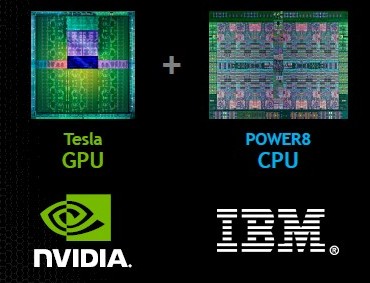IBM's Power8 servers are less than meets the eye

Two weeks ago IBM told the IT world it was taking on Intel in the battle for server chips with new Power8 processors incorporating advanced interconnection and GPU technology from NVIDIA. This followed an announcement earlier in the year that Google was using Power8 processors in some of its homemade servers. All this bodes well for IBM’s chip unit, right?
Not so fast.
Some product announcements are more real than others. While it’s true that IBM announced the imminent availability of its first servers equipped with optional Graphical Processing Units (GPUs), most of the other products announced are up to two years in the future. The real sizzle here is the NVlink and CAPi stuff that won’t really ship until 2016. So it is marketing a 2016 line of Power8 vaporware against a 2014 Intel spec. No wonder it looks so good!
This new technology won’t contribute to earnings until 2016, if then.
Worse still, the Power8 chips rely on a manufacturing process that’s behind Intel from a division IBM was trying to pay to give away (without success) only a few weeks before. And that Google announcement of Power8 servers didn’t actually say the search giant would be building the boxes in large numbers, just that it was testing them. Google could be doing that just to get better pricing from Intel.
This is IBM marketingspeak making the best of a bad situation. It’s clever leveraging of technology that is otherwise becoming rapidly obsolete. If IBM wants Power to remain competitive it’ll have to either spend billions to upgrade its Fishkill, NY chip foundry or take the chips to someplace like TSMC which will require major reengineering because TSMC can’t support IBM’s unique -- and orphaned -- copper and silicon-on-insulator (SOI) technology.
IBM is right that GPUs will play an important part in cloud computing as cloud vendors add that capability to their server farms. First to do so was Amazon Web Services with its so-called Graphical Cloud. Other vendors have followed with the eventual goal that we’ll be able to play advanced video games and use graphically-intensive applications like Adobe Photoshop purely from the cloud on any device we like. It’s perfectly logical for IBM to want to play a role in this transition, but so far those existing graphical clouds all use Intel and Intel-compatible servers. IBM is out of the Intel server business, having just sold that division to Lenovo in China for $2.1 billion.
Key to understanding how little there is to this announcement is IBM’s claim that the new servers it is shipping at the end of this month have a price-performance rating up to 20 percent higher than competing Intel-based servers. While 20 percent is not to be sneezed-at, it probably isn’t enough to justify switching vendors or platforms for any big customers. If the price-performance were, say, double that might be significant, but 20 percent -- especially 20 percent that isn’t really explained since IBM hasn’t revealed prices yet -- is just noise.
Those who adopt these new IBM servers will have to switch to Ubuntu Linux, for example. Industry stalwart Red Hat doesn’t yet support the platform, nor does IBM’s own AIX. Switch vendor, switch operating system and maybe gain 20 percent won’t cut it with most IT customers.
And we’ve been here before.
From Wikipedia: "The PowerPC Reference Platform (PReP) was a standard system architecture for PowerPC based computer systems developed at the same time as the PowerPC processor architecture. Published by IBM in 1994, it allowed hardware vendors to build a machine that could run various operating systems, including Windows NT, OS/2, Solaris, Taligent and AIX".
PReP and its associated OSF/1 operating system were an earlier IBM attempt to compete with and pressure Intel. Intel kept improving its products and made some pricing adjustments, destroying PReP. Linux basically killed OSF/1 and every other form of Unix, too. OSF/1 came out in 1992. PReP came out in 1994. By 1998 both were forgotten and are now footnotes in Wikipedia.
IBM’s OpenPower is likely to suffer the same fate.
